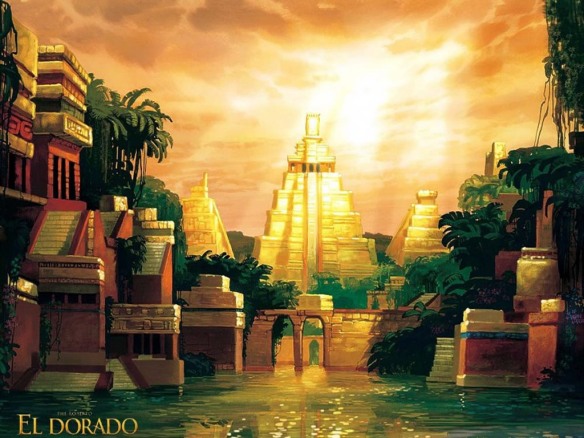
The purpose of Gonzalo Pizarro’s expedition over the Andes was to locate the source of gold usually embodied in the legend of El Dorado (a mythical ruler or city of gold)—bringing us to the third routine aspect of Conquest procedure. This was the search for precious metals, preferably gold, with silver a close second. This aspect of Conquest procedure has probably least often been depicted as the exceptional or original strategy of Cortés or one of the other well-known conquistadors. On the contrary, it has been accurately seen as a concern of all members of Spanish expeditions. But it has certainly been misunderstood, to the extent that Spanish “thirst for gold” represents one of the many little legends or mini-myths of the Conquest. The conquistadors have been depicted as “driven by the lust for gold” or by a “greed” for it that “is strongly reminiscent of the collective psychosis that seized upon California gold diggers in the mid-nineteenth century.” In the words of another scholar, “It never occurred [to Spanish colonists] to do anything but look for gold, and this frantic search for precious metals, jewels, and pearls prevented them from engaging in any productive economic activity.”
Such a perspective fails utterly to understand the nature of the early colonial economy and the role played in it by precious metals. The “most important thing” to Pizarro was not gold, but the governorship. However, he needed to find gold in order for there to be a governorship worth having. Put in the larger context, Spaniards had no interest at all in the metal per se, any more than we treasure credit cards as objects. The finely worked gold artifacts collected at Cajamarca and other places were melted down in the fundición, a routine that immediately followed all such acquisitions and that allowed shares to be paid out, debts settled, and further supplies and credit procured. It was the value and buying power of gold and silver that Spaniards cared for. They conceived of the precious metals as money—often referring to ship ments of them as dineros—and as the basis of the credit system that supported so much conquistador activity.
If Spaniards seem at times single-minded in their quest for these metals, this was because gold and silver were not just the preferred source of wealth, but the only items whose value in relation to their transportability made the entire Conquest and colonial endeavor possible. No other New World product even came close to being as valuably nonperishable, divisible, and compact. Rather than being a barrier to “productive economic activity,” gold and silver from the Americas and its pursuit by Spaniards underwrote the Conquest and virtually all subsequent economic activity in the New World (let alone altering the economic and political history of Europe).
Almost as determinedly as they sought gold, Spaniards looked for native populations. One aspect of this complex process was the need to acquire native allies—the fourth standard Conquest procedure. This strategy was necessitated by the fact that Spanish expeditions were always outnumbered by the native peoples of the regions being invaded, and that Spaniards were often ignorant of both region and people. Allies were potential sources of invaluable information. They also provided crucial support in the way of provisions and porters to transport them. Above all, native allies provided military assistance, offsetting the potential imbalance of numbers during battle and allowing the Spaniards to pursue a classic divide-and-conquer strategy. This was by no means an original or exceptional strategy as pursued by Cortés or by Pizarro; every conquistador sought native allies, as many and as soon as possible.